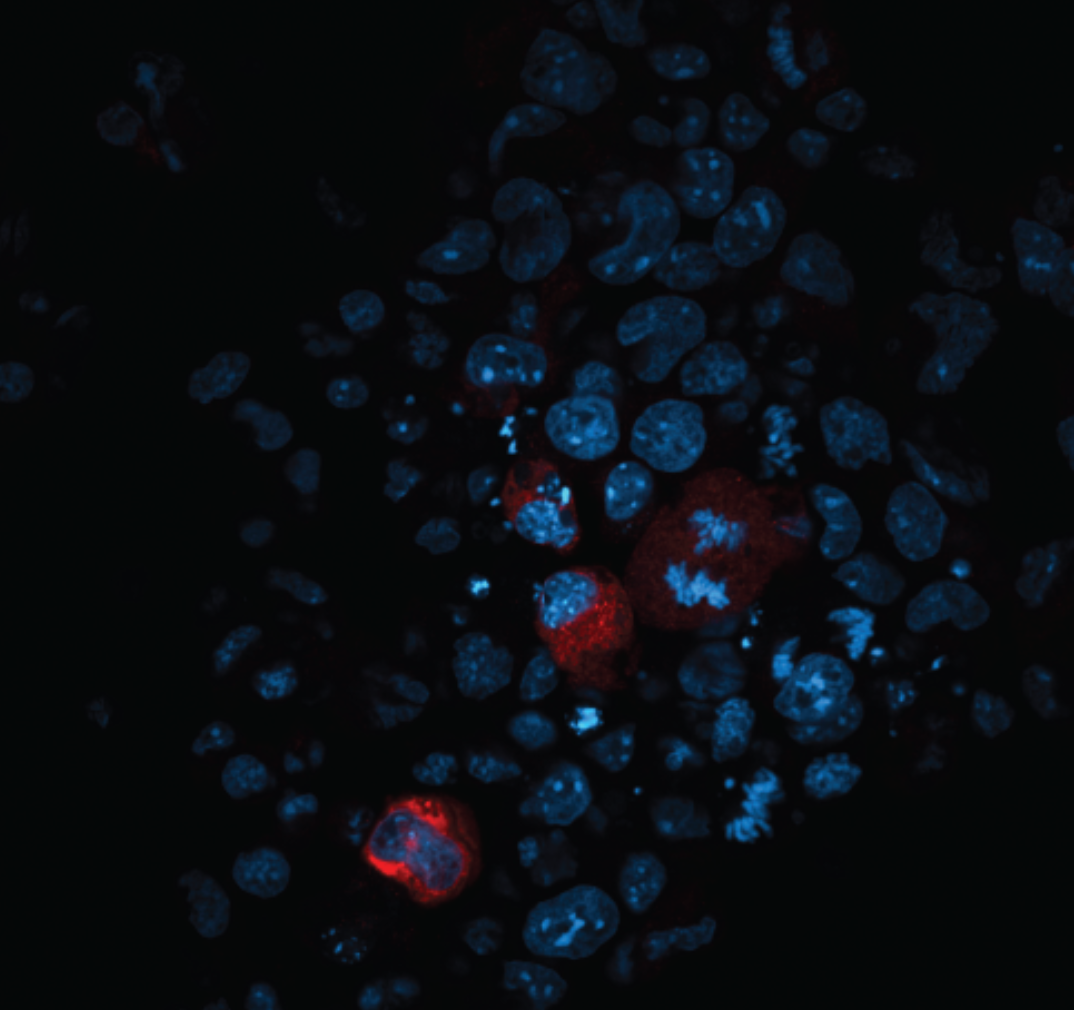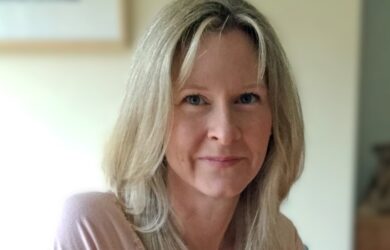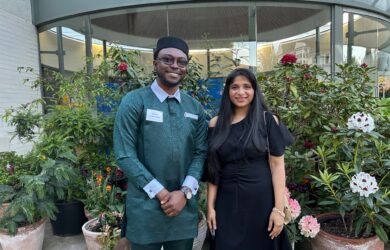
Research study led by Dr Rebecca Berens finds first evidence that endosiRNAs moderate transposon activity during DNA demethylation.
Epigenetic reprogramming plays a vital role in wiping the genome clean at the start of development, but it leaves our genes vulnerable. Understanding the arms race between our genes and transposon activity has been a long-running question in molecular biology.
Dr Rebecca Berens
Molecules called endosiRNAs help us avoid genetic chaos, according to a new study from the Babraham Institute, led by a Gates Cambridge Scholar.
Much of the human genome contains pieces of DNA called transposons, a form of genetic parasite. When active, transposons can damage genes so it is important to keep them inactive. Early in the human life cycle controlling transposons is particularly difficult. This latest research, published in Cell Stem Cell, reveals how endosiRNAs keep our genes safe during this vulnerable stage.
Transposons, also called transposable elements, are ancient viruses that have become a permanent part of our genes. Around half of the human genome is made of transposons, many are damaged, but some can become active. Active transposons can be harmful because they move about the genome. When transposons move they can damage genes, leading to genetic illnesses and playing a part in some cancers.
Chemical markers in DNA called methylations can keep transposons inactive. Cells often use methylations to inactivate pieces of DNA, whether they are genes or transposons. Yet, in each new generation most methylations are temporarily erased and renewed by a process called epigenetic reprogramming. This means that, during sperm and egg production, there is a short time when methylations do not control transposon activity, leaving them free to damage genes and shuffle DNA.
The new findings show that transposons become active when cells erase DNA methylation and they are shut down by the endosiRNA system. Just like active genes, active transposons produce messages in the form of RNA molecules, which have many similarities to DNA. The study reveals that cells can detect these transposon RNA messages and use them to create specific endogenous small interfering RNAs (endosiRNAs). The endosiRNAs then act like a trap, allowing a protein called Argonaute2 (Ago2) to seek and destroy transposon messages before they cause any harm.
Speaking about the research lead author on the paper Dr Rebecca Berrens [2012], who completed her PhD in Biological Science with the support of a Gates Cambridge Scholarship, said: “Epigenetic reprogramming plays a vital role in wiping the genome clean at the start of development, but it leaves our genes vulnerable. Understanding the arms race between our genes and transposon activity has been a long-running question in molecular biology. This is the first evidence that endosiRNAs moderate transposon activity during DNA demethylation. EndosiRNAs provide a first line of defence against transposons during epigenetic reprogramming.”
The effects of active transposons vary, often they have no effect, only occasionally will they alter an important gene. Yet, transposons can affect almost any gene, potentially leading to different kinds of genetic disease. Studying the control of transposons, adds to our understanding of the many ways that they can impact on human health.
Transposons sit within genes and are read in the opposite direction to the surrounding gene. It is this arrangement that allows cells to identify RNA messages from transposons. RNA messages read from the same piece of DNA in opposite directions are complementary, meaning they can join to form a structure called double-stranded RNA (dsRNA), which initiates the creation of endosiRNAs.
Senior scientist on the paper, Professor Wolf Reik, Head of the Epigenetics Laboratory at the Babraham Institute, said: “Transposons make up a large part of our genome and keeping them under control is vital for survival. If left unchecked their ability to move around the genome could cause extensive genetic damage. Understanding transposons helps us to make sense of what happens when they become active and whether there is anything we can do to prevent it.”
Much of this research was carried out using embryonic stem cells grown in the lab, which had been genetically modified to lack DNA methylations. Natural epigenetic reprogramming happens in primordial germ cells, the cells that make sperm and eggs, but these are harder to study. The researchers used primordial germ cells to verify the key results from their study of stem cells.

Rebecca Berrens
- Alumni
- Germany
- 2012 PhD Biological Science
- Trinity College
My name is Rebecca Berrens and I am a molecular biologist studying the role of transposable elements in early mammalian development. I did my undergraduate at the University of Heidelberg. I did my Bachelor thesis at EMBL in the lab of Matthias Hentze and studied miRNAs and was fascinated by the function of these small RNAs in the cell. I then did my Master's at CSHL in Greg Hannon's lab and learned the first time that in our genome there are transposable elements which can jump in the genome. During my PhD in Wolf Reiks lab at the Babraham institute in Cambridge I studied how the genome controls transposable elements by epigenetic modifications in early development. Now as a postdoc at CRUK-CI I am studying how transposable element expression controls gene expression during cell fate decision. This study will help to unravel the intricate relationship between the selfish jumping genes and our genome.

Rebecca Berrens
- Alumni
- Germany
- 2012 PhD Biological Science
- Trinity College
My name is Rebecca Berrens and I am a molecular biologist studying the role of transposable elements in early mammalian development. I did my undergraduate at the University of Heidelberg. I did my Bachelor thesis at EMBL in the lab of Matthias Hentze and studied miRNAs and was fascinated by the function of these small RNAs in the cell. I then did my Master's at CSHL in Greg Hannon's lab and learned the first time that in our genome there are transposable elements which can jump in the genome. During my PhD in Wolf Reiks lab at the Babraham institute in Cambridge I studied how the genome controls transposable elements by epigenetic modifications in early development. Now as a postdoc at CRUK-CI I am studying how transposable element expression controls gene expression during cell fate decision. This study will help to unravel the intricate relationship between the selfish jumping genes and our genome.












